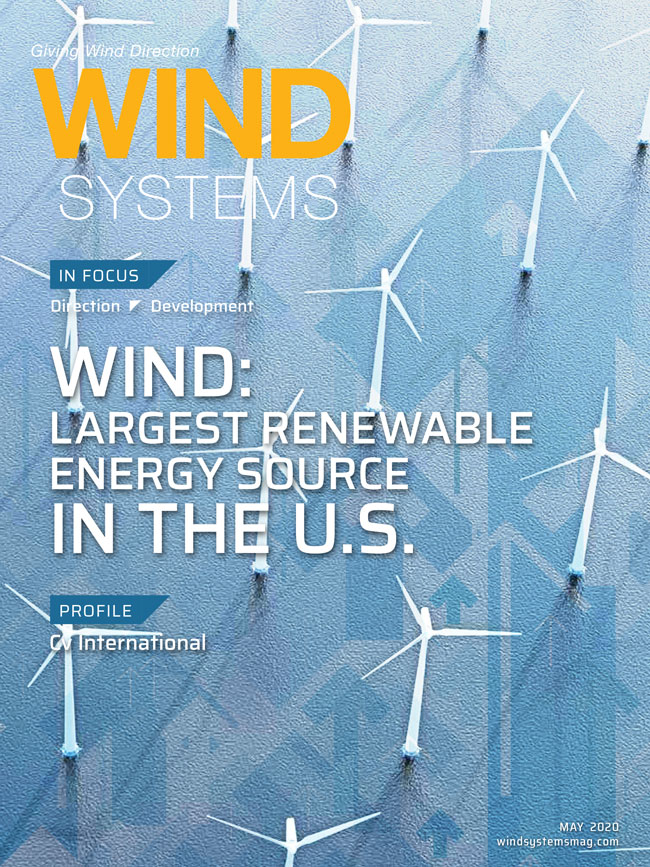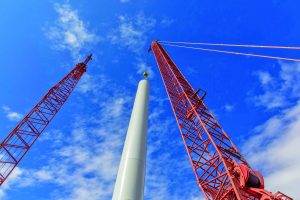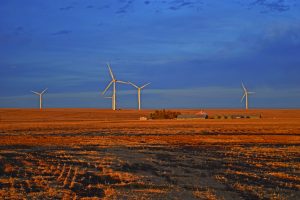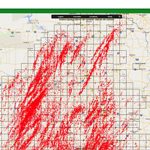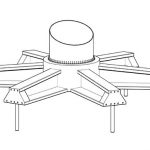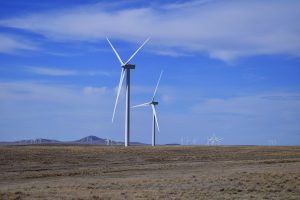Offshore wind projects are major undertakings that involve a vast array of stakeholders, so the key to the success of an offshore project is to ensure modern technology is in place and conventional wisdom is implemented.
Some of the most favorable wind-energy resources in the U.S. happen to be in places where there simply aren’t many people — notably in the rural South and Midwest, as well as off our coastlines. This creates a dilemma, since the country’s main electricity demand is in large population centers near the East and West coasts. Transmitting electricity over long distances between the coasts and the Midwest is expensive, which limits the financial viability of lighting the coastal regions with onshore wind power.
Offshore wind power, in contrast, is uniquely positioned to address electricity demand in the coastal regions. Notably, the proximity to the load centers increases their viability dramatically by offering a number of key advantages.
For instance, offshore generation sources benefit from lower transmission and logistics costs due to proximity to high electrical load centers in coastal regions. They also enjoy high electricity generation potential due to high offshore wind speeds and power density.
Because they are less intermittent, they also tend to have higher power generation per installed capacity. Finally, because they have minimal land requirements per amount of installed power, they benefit from a smaller geographical footprint, lower community acceptance challenges, and relatively low environmental impact.
Of course, there are challenges with offshore wind as well. Of note, turbines are expensive to build, particularly for rugged offshore environments. Interconnecting with the existing grid can also present a significant obstacle. Yet, advanced technology and deployment strategies continue to make offshore wind projects more appealing.
As important, the successful integration of offshore wind power into our energy supply is an essential component of greening the grid. This can also ease the country’s demand for large centralized diesel and nuclear power plants.
However, these projects are typically quite dramatic in scale and involve a wide and complex web of players. Developers need to apply a wide range of technologies, planning tools, and deployment strategies to overcome community objections and achieve their aims.
The Offshore Wind Interconnection Challenge
The coastal regions in the U.S. represent the peripheral nodes of the grid. They consist of sub-transmission and distribution-level infrastructure. These systems, while favorably located, are not ideal for the transfer of electricity back inland.
Also, they cannot absorb large power inputs from offshore wind generators. The few substations that exist barely have the capacity necessary for interconnection with offshore wind energy. One way to solve this challenge is to upgrade the existing grid.
Advanced solutions are now available that can reduce the risks and costs of offshore wind power integration without requiring huge changes to the grid. The following are key areas in which developers can manage risks without compromising on quality or performance:
- Power transmission type.
- Substation systems.
- Power quality systems.
- Protection and control systems.
Later, we will explore in detail how each of these features can ease the integration of offshore wind power.
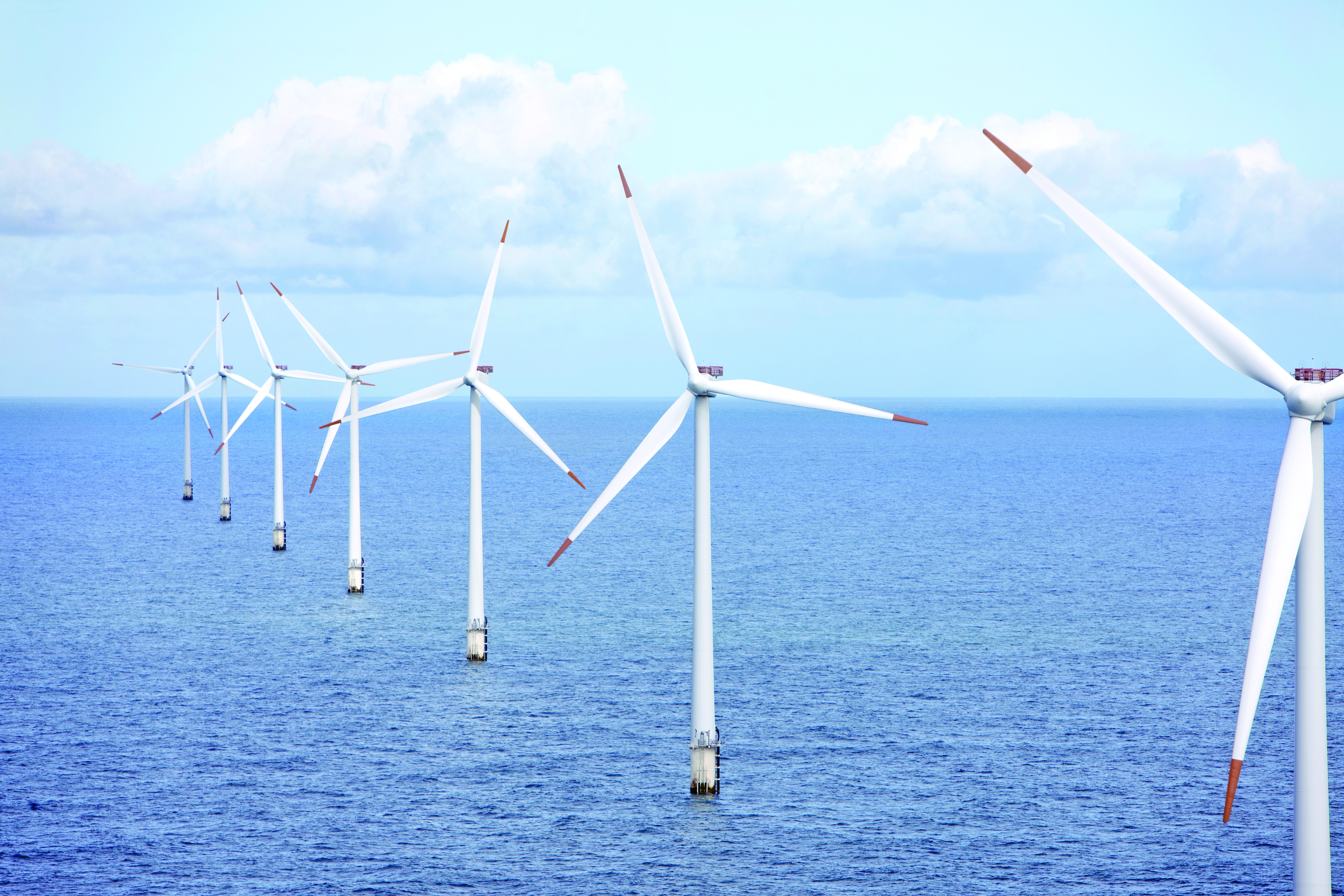
Power Transmission Type
Offshore wind turbines send all of the power they generate to a central offshore substation. From there, the power goes through a submarine transmission line to the shore and then is transmitted via overhead or underground cables to the final interconnection point.
There are two main power transmission options available for offshore wind farms: high voltage direct current (HVDC) and alternating current (AC) transmission systems. Each system is optimized for a specific set of conditions.
The AC transmission systems are economical over short distances ranging between 30 and 50 miles. Yet, they generate reactive charges that limit the transmission capacity within their cables. The limitations are negligible in short cables but can cause major losses over long distances.
HVDC transmission lines don’t generate reactive charging currents. This makes them ideal for long-distance power transmission, as well as suitable for connecting wind farms that are far from the shore.
Once onshore, the power is transmitted via overhead or underground cables to a viable grid interconnection point. Transmission lines must satisfy community requirements to earn right-of-way and relevant permits.
Increasingly, overhead transmission lines face tough opposition due to its high visual impact. Underground AC cables are often opposed due to the charging currents they generate; however, they benefit from the ability to integrate directly with onshore transmission lines.
HVDC cables, in contrast, have lesser, right-of-way requirements than AC systems. This is because they can achieve higher capacity ratings with fewer cables. However, the need for HVDC-to-AC converter stations can face heavy community opposition, as well as representing additional investments.
Accounting for these factors in the planning phase of an offshore wind farm can save time and valuable resources during implementation.
Substation Systems
Offshore and onshore substations are vital components in the integration of wind farms within the grid. The offshore substation balances the power from the various wind turbines before transmission, reducing fluctuations and improving the reliability of the wind farm.
Onshore substations are particularly useful where the coastal grid infrastructure is limited. Robust onshore substations can help facilitate the integration of the offshore wind farm and the grid.
Developers can deploy a wide variety of technology solutions to reduce the footprint of the substations. These technologies make the substations smaller, yet more efficient, helping reduce real estate requirements, in addition to the cost of construction, maintenance, and operation. These techniques can reduce the environmental impact of a given project, and in turn help limit community opposition. Some of these technology solutions include:
- Low-losses power transformers.
- Breakers.
- AC gas-insulated switchgear (GIS).
- HVDC voltage source converters (VSC).
Gas-insulated switchgear (GIS) is the ideal option when using an AC-based power transmission system. The GIS is a compact metal encapsulated switchgear, consisting of high-voltage components, such as disconnectors and circuit breakers.
The GIS uses sulfur hexafluoride gas (SF6) because of its high dielectric strength and arc-quenching properties. This allows for the reduction of the spacing between the switchgear and conductors. GIS also makes the AC systems safer to operate in confined spaces.
The GIS takes up much less space than the traditional air-insulated switchgear (AIS), ultimately reducing the substation’s footprint by up to 85 percent. This offers substantial benefits in terms of siting, since it is easier to construct, manage, and gain approval for smaller substations. GIS systems are ideal for offshore substations because they have low maintenance requirements.
Voltage source converters (VSC) are a good option for HVDC transmission systems. Modern HVDC systems are more compact than traditional legacy units and need less land for construction. They are also better at managing offshore wind strength limitations.
It is important to consider the best transformer unit size for the offshore substation. This is vital for both AC and HVDC transmission systems. The transformer unit size should create a balance between the space, construction cost, efficiency, and power delivery requirements of the system. This applies to both normal and contingency operating conditions.
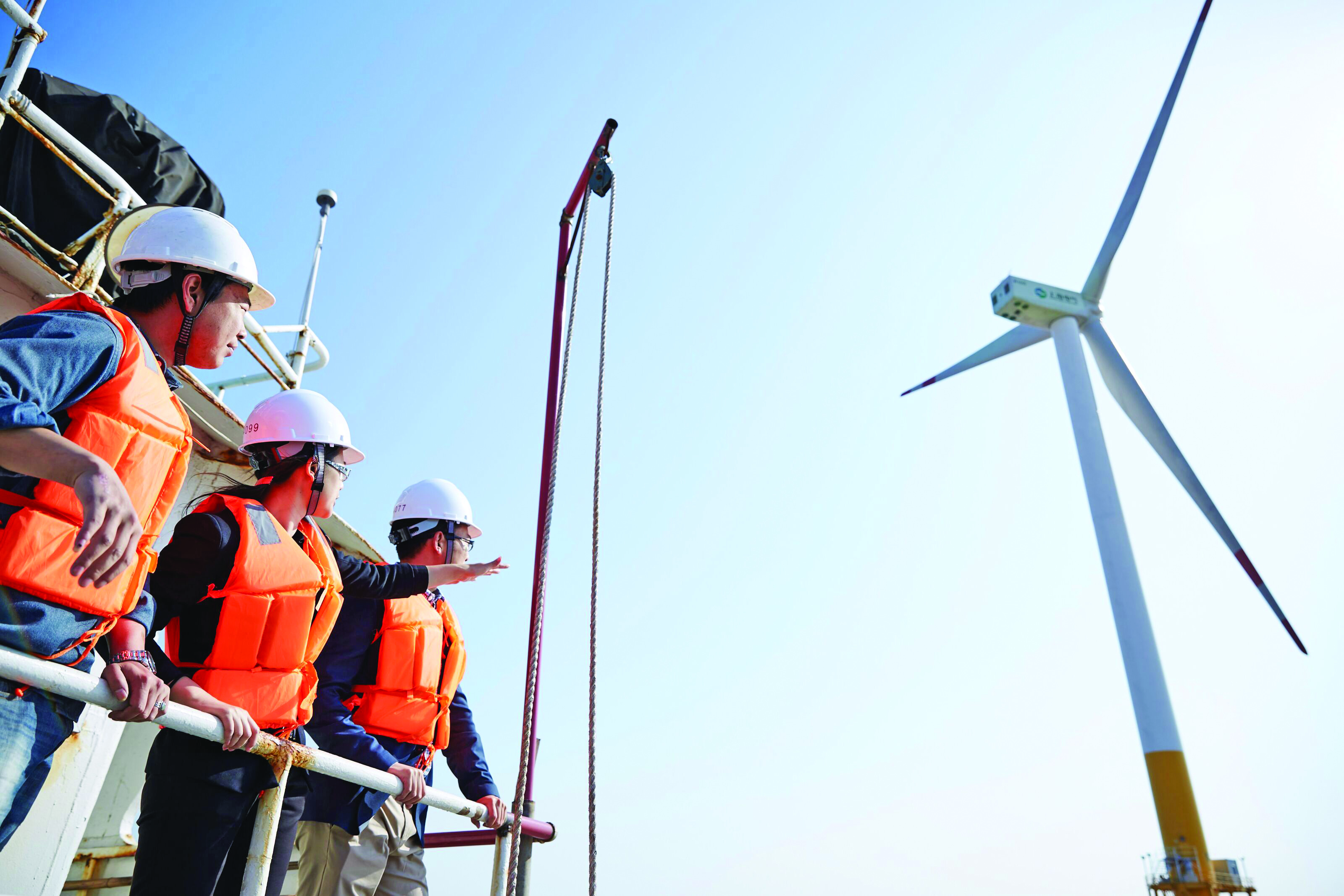
Power Quality Systems
Offshore wind power systems need to maintain high power quality and system reliability to be successful. Weak grids can cause the generation of unacceptable voltage conditions.
Several technologies can facilitate the maintenance of optimal wind power quality in varying conditions. They can regulate the voltage and provide reactive power support at the interconnection point of the grid. These technologies include:
- Flexible AC transmission systems (FACTS).
- Energy storage systems.
- Shunt reactors.
- Synchronous condensers.
- HVDC VSC technology.
FACTS are dynamic shunt compensation tools. They can increase the power transmission capabilities of existing grids and are also useful for congestion management. FACTS enable wind farms to transfer additional power over the existing grid infrastructure. Common examples of FACTS are static VAR compensators (SVCs) and static synchronous compensators (STATCOMs).
Systems with fast regulation properties are important when the proportion of wind power in the grid is high. These systems need to react quickly and normalize any fluctuations in wind-power generation. They can maintain grid reliability by balancing the real and reactive power of the wind power system.
Additionally, developers need to address the full range of interconnection issues specified in the regional grid code. They should also identify and meet requirements defined by regulatory authorities including the North American Electric Reliability Corporation (NERC), Regional Transmission Owner (RTO) and Independent System Operator (ISO) organizations.
The main concerns of these regulatory authorities include the reactive power and black-start capability of systems dominated by intermittent wind resources, in addition to the performance of wind systems during normal and contingency operational conditions and the effects of cable system energization and generator synchronization on system voltage.Synchronous condensers and energy storage systems can provide synthetic inertia. This can improve the performance and frequency response of the grids where wind generation exceeds fossil-fuel and hydro-based generation.
Shunt reactors improve the performance of long AC cable systems. They absorb the reactive power generated within the AC cables. Shunt reactors are connected directly to the power circuit or the tertiary winding of a three-winding transformer, which can be either a permanent or switched connection using a circuit breaker. Using a shunt reactor with a variable rating can optimize the consumption of reactive power in the system. Variable shunt reactors (VSRs) are economical solutions if the load variation is slow. The FACTS shunt devices should be identified during the conceptual and design phases of the wind farm.
Protection and Control Systems
Offshore wind farms should ensure the consistent availability, reliability, and deliverability of power when needed. Automatic and remote-monitoring systems optimize these functions. These remote systems collectively form a “digital substation.” Digital substations understand, predict, and optimize system performance, which can prevent unplanned shutdowns. Additionally, digital substations reduce maintenance requirements, needed footprint, and operational costs.
The system uses intelligent electronic protective relays to monitor potential faults in the system. The relays can monitor several real-time variables in the power system. This includes the flow of current from the offshore substation. If a fault is found, the system can isolate and break the power flowing through a specific cable.In offshore wind systems, device intelligence can save costs and enhance safety. The technology limits the risks and costs of on-site troubleshooting. The systems can provide real-time notifications on the condition of the wind-power assets before complications arise. They also allow operators to take equipment offline and do remote modifications.
In the U.S., new power-generation infrastructure should comply with the NERC Critical Infrastructure Protection Plan (NERC – CIP). This plan consists of nine standards and 45 requirements covering the security of electronic perimeters, protection of critical cyber assets, and disaster recovery planning among others.
Cybersecurity is a key component of the NERC – CIP features. This is because of the vulnerability of digitalized assets. Multiple layers of defense are incorporated in the architecture of the substation’s automation and control system. Cybersecurity solutions should be compliant with the latest industry standards. Other examples of technologies that address cybersecurity concerns include next-generation firewalls, access control, patch management, and detailed audit trails of user activities.
Welcoming Expert Insights
Offshore wind energy is still in its relative infancy in the U.S. As such, the sector is constantly evolving, so seeking expert advice early in the project can save developers a lot of time and resources. Tapping into the experience of experts in the field can also avert various risks in the project.
The U.S. Bureau of Ocean Energy Management (BOEM) has an offshore wind-energy program. This program divides offshore wind energy project development into four distinct phases:
- Planning and analysis.
- Leasing.
- Site assessment.
- Construction and operations.
Expert analysis can help to narrow down the viable BOEM lease sites that developers should pursue. Expert advice can also help them to identify and avoid challenges that may delay the project. Some of the services offered by energy-development experts include economic feasibility analysis, regulatory framework analysis, system impact studies, grid code compliance, grid integration analysis, grid interconnection planning, and advisory services.
Conclusion
Offshore wind-power projects are vast endeavors that involve a wide range of stakeholders. The key to the successful implementation of such projects is to leverage modern technology and conventional wisdom. Learning from best practices applied in the industry is a valuable starting point. Embracing advanced technology opens opportunities for the long-term viability of the project.
















